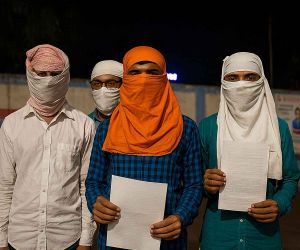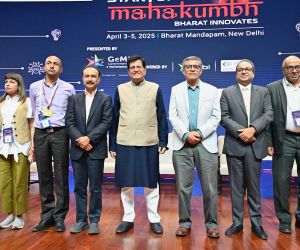MORE COVERAGE
Twitter Coverage
Satyaagrah
Written on
Satyaagrah
Written on
Satyaagrah
Written on
Satyaagrah
Written on
Satyaagrah
Written on
JOIN SATYAAGRAH SOCIAL MEDIA
Matarbari port in Bangladesh promises to be a strategic pivot for India, unlocking northeastern connectivity and boosting trade, as Japan aids this venture, India stands to gain not just in regional trade but also in countering China's growing footprint

At the heart of the Bay of Bengal, a revolution in regional trade and connectivity is taking shape. The Matarbari deep sea port, a magnificent feat of modern engineering, currently unfurls under the watchful eye of Bangladeshi visionaries. Yet, the implications of this port stretch far beyond Bangladesh's shores; it stands poised to redefine the region's economic landscape.
|
Imagine the bustling trade channels unlocked, directly connecting India's northeast, especially the picturesque and strategic state of Tripura, to the broader world. Now extend this vision to the serenity of landlocked nations like Nepal and Bhutan, who will find in the Matarbari port a new gateway to global markets. The undercurrents of this development resonate deeply with aspirations of enhanced regional cooperation and integration.
But there's more. Look further east, and you'll find Japan, a nation with a keen eye on India's northeastern treasures. For Japan, this isn't just any region; it's a focal point, a land brimming with untapped potential. They foresee an integrated, robust supply chain here, amplifying their already impressive presence and upscaling their investments.
It's worth noting that while currently, approximately 350 Japanese firms grace Bangladesh with their presence, the potential inauguration of an integrated region promises to skyrocket this number, ushering in an era of unprecedented economic growth and synergy.
Nestled in the scenic environs of Cox’s Bazar, the Matarbari port is blooming under the astute guidance of the Japan International Cooperation Agency. They envision it as a crown jewel in the Bay of Bengal Industrial Growth Hubs. One can almost hear the echoes of future prosperity.
Takashi Suzuki, the Chief Director General (South Asia) of the Japan External Trade Organisation (JETRO), eloquently puts it, “Japan wants better connectivity between India’s northeast and Bangladesh to leverage and build on each other’s strengths.” His words echo a sentiment of mutual growth and interconnected futures.
|
Further cementing the sentiment was Japanese Prime Minister Fumio Kishida. On his historic visit to India, he underscored the latent potential of India’s Northeast. A region abundant in resources, yet to be fully explored. For him, fortifying connectivity in this region wasn't just a regional strategy; it was a cornerstone for building resilient global supply chains.
In essence, as the sun rises each day over the construction cranes at the Matarbari port, it symbolizes the dawn of a new era. An era of interconnected dreams, mutual growth, and a shared future for India, Bangladesh, and beyond.
Building connections isn't merely about constructing roads, bridges, or ports; it's about crafting opportunities and creating shared visions. The National Maritime Foundation (NMF), in its enlightening study, has captured this very ethos. The organization paints a picture of a future where nations don't just trade goods but exchange cultural values, innovative infrastructure ideas, tourism opportunities, and much more. The heartbeat of their findings resonates with one clear sentiment, “The establishment of a seamless regional trade network lays the foundation for shared prosperity and sustainable development, ultimately benefiting all participating nations.” This is the promise of the Matarbari deep sea port.
Let's consider the immediate tangible impact. The operational prowess of the Matarbari port promises a fresh paradigm in logistics. Currently, the Haldia port shoulders the massive responsibility of managing a large volume of trade. Once Matarbari flexes its operational muscle, many items traded via Haldia will find a new route, optimizing trade efficiency. But Matarbari isn’t just another port; it's an emblem of progress, designed to accommodate larger cargos and handle the nuances of modern trade.
However, the ripples of Matarbari's development go beyond mere logistics. In the grand tapestry of geopolitical strategies, the port emerges as a counterbalance to China's ambitious Belt and Road Initiative, a multi-trillion-dollar mammoth project. One can't help but note the strategic significance of Matarbari. An analyst aptly pointed out, “Matarbari port is strategic. It will boost connectivity, but notably, it offers both India and Japan a significant opportunity to counterbalance China's expanding influence.”
Adding depth to this narrative is the shared vision between Japan and India in Bangladesh. While Japan meticulously develops the Matarbari port, India is simultaneously revamping the Mongla Port, upgrading roads, electrifying regions, enhancing railway networks, and rejuvenating inland waterways. Their combined efforts in Bangladesh underscore a shared commitment to mutual growth.
A testament to this burgeoning collaboration was last year's landmark moment. Cargo movements commenced between Kolkata and the northeast via Bangladesh’s Mongla port. It wasn't just the movement of goods; it symbolized the confluence of aspirations between New Delhi and Dhaka.
In essence, the Matarbari port isn't just a testament to engineering prowess; it's a beacon of a collective dream. A dream where nations, in their quest for progress, come together to write a shared story of prosperity, balance, and unity.
The Matarbari Beacon: A Promise of Prosperity for Landlocked Neighbors
Landlocked by geographical fate, Nepal and Bhutan have long depended on the goodwill and infrastructure of their larger neighbors, India and Bangladesh, for port access. The National Maritime Foundation (NMF) observes that Matarbari isn't just a Bangladeshi marvel. It’s an emblem of collaborative growth. As NMF asserts, Matarbari not only offers tangible economic dividends to Bangladesh but is also a gleaming promise of economic upliftment for Nepal and Bhutan.
Picture this: Goods from the heart of Bhutan or the valleys of Nepal, previously shackled by high regional transshipment costs, finding a smoother, more efficient route through Matarbari. The consequent reduction in these costs translates to increased competitiveness in global markets, better pricing, and perhaps, a broader range of goods reaching international consumers. This isn’t mere economics; it's a game-changing enhancement in the global trade footprint of these nations.
But why does this matter? Consider the broader landscape. South Asia, with its rich tapestry of cultures, histories, and resources, is paradoxically among the least integrated regions globally. A fact that isn’t just a reflection of political dynamics but also of infrastructure deficits.
Junaid Ahmad, who wears the distinguished hat of Vice President of Operations at the Multilateral Investment Guarantee Agency of the World Bank (and once served as the Country Director for India), shares a profound vision for the region. He underscores, “The eastern sub-region has the potential to metamorphose into an economic powerhouse for South Asia. However, the roadmap to such a transformation mandates significant investments in connectivity, encompassing rail, inland waterways, and roads.”
In the vast narrative of South Asian connectivity, Matarbari port can be visualized as a linchpin, binding nations together in a collective dream of prosperity. It isn't just about goods, ships, and trade routes. It's about fostering integration, nurturing economic dreams, and painting a brighter, interconnected future for a region yearning to script its renaissance.
 Support Us
Support Us
Satyagraha was born from the heart of our land, with an undying aim to unveil the true essence of Bharat. It seeks to illuminate the hidden tales of our valiant freedom fighters and the rich chronicles that haven't yet sung their complete melody in the mainstream.
While platforms like NDTV and 'The Wire' effortlessly garner funds under the banner of safeguarding democracy, we at Satyagraha walk a different path. Our strength and resonance come from you. In this journey to weave a stronger Bharat, every little contribution amplifies our voice. Let's come together, contribute as you can, and champion the true spirit of our nation.
 |  |  |
| ICICI Bank of Satyaagrah | Razorpay Bank of Satyaagrah | PayPal Bank of Satyaagrah - For International Payments |
If all above doesn't work, then try the LINK below:
Please share the article on other platforms
DISCLAIMER: The author is solely responsible for the views expressed in this article. The author carries the responsibility for citing and/or licensing of images utilized within the text. The website also frequently uses non-commercial images for representational purposes only in line with the article. We are not responsible for the authenticity of such images. If some images have a copyright issue, we request the person/entity to contact us at satyaagrahindia@gmail.com and we will take the necessary actions to resolve the issue.
Related Articles
- Despite immense sacrifice by Hindu community in the liberation war they are subjugated denominations in the country. Bangladesh seized 26 lakh acres of land from Hindus under black law of “Enemy Property Act”
- Modi govt announces incentive scheme for RuPay and BHIM-UPI after Visa complained to US govt about Indian govt promoting RuPay
- Elon Musk who polled his 80+ million followers on Twitter asking if the organization complies with the principles of free speech, takes a 9.2 percent passive stake in Twitter to become the top shareholder
- A fascinating legend of the ethereal Indian cotton which led to Rome losing a significant quantity of its wealth to India
- Car manufacturers Celebrating Pro-terrorism stand on Kashmir has invited massive criticism from National auto dealers’ body: Urges the Ministry of Heavy Industries & SIAM India to seek clarifications
- "तख़्तापलट": Meet Muhammad Yunus, interim chief of Bangladesh, branded a ‘bloodsucker’ by Sheikh Hasina and a ‘US asset,’ as the US revokes Sheikh Hasina’s visa after her ouster and the UK denies her asylum, leaving her stranded at Hindon Airbase in India
- “Resurgence above all odds being proud of it is a leadership symbol”: Driven by the impressive surge in Adani Group shares, India's stock market witnessed a remarkable rebound, reclaiming position as world's fifth-largest stock market surpassing France
- "The future belongs to those who believe in the beauty of their dreams": IndiGo made history with a monumental aircraft order worth $50billion marking the largest order ever in the aviation industry highlighting unprecedented growth of air travel industry
- "New dynamism in ties": In Jakarta, PM Modi calls for a new rules-based order in the post-Covid era, emphasizing the critical role of the ASEAN-India partnership in shaping the resurgence of Asia in the 21st century and fostering global growth
- "तेरा यहाँ कोई नहीं": Bangladesh following Pakistan's dangerous path sentenced a Hindu girl Tithy Sarkar to 5 years in prison for alleged blasphemy, igniting outrage & raising serious concerns about escalating religious intolerance against Hindu minority
- World’s richest man Elon Musk offers $43 billion of hostile takeover for the 100% shares of Twitter, says he believes in free speech and can unlock its potential: Twitter shares rose 18% after the announcement was made
- Bangladesh and India put the final nail in the coffin of China’s ‘String of Pearls’ with access to Chittagong port as it was offered by PM Sheikh Hasina for use by India for trade and uninterrupted commerce
- PM Narendra Modi during his talk with US President Joe Biden offered to supply food stock to the world if the WTO agrees: Food stock in different parts of the world is dwindling due to the war (in Ukraine)
- "Our energy purchases from Russia for the month would be less then what Europe does in an afternoon. I Prefer To Do, Articulate It My Way": EAM S Jaishankar on India's stance over Ukraine war and Russian energy imports
- George Soros’s Open Society Foundation-funded Institute Peace Research Institute Oslo (PRIO) names Open Society functionary Harsh Mander in unofficial shortlist for Nobel prize

























